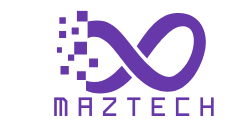Introduction
As technology advances, the debate between online learning and traditional classroom education has intensified. Online learning, once considered supplementary, has become a mainstream alternative, offering flexibility and accessibility. Meanwhile, traditional classrooms provide structured environments conducive to interpersonal skill development. This article examines the advantages and disadvantages of both methods, comparing learning outcomes, social impacts, and suitability for modern students. Understanding these differences can help students, parents, and educators make informed choices about which method best supports educational goals.
Traditional Classroom Learning
Traditional classroom education provides a structured environment where students can interact directly with instructors and peers. This face-to-face interaction fosters a sense of community, encouraging students to develop communication and teamwork skills. Traditional classrooms often have a set schedule, which helps students build discipline and time management skills. However, these environments are limited by physical space and can be less accessible for students with geographical or financial constraints. Despite these drawbacks, traditional classrooms remain valuable for students who thrive in a structured setting and benefit from in-person interaction.
Online Learning
Online learning offers flexibility that traditional classrooms cannot match. Students can attend classes from anywhere with an internet connection, making education more accessible for individuals with busy schedules or geographical limitations. Additionally, online courses are often more affordable, reducing the financial barriers to higher education. However, online learning demands self-discipline and time management skills, as students are responsible for staying on track without in-person oversight. Despite these challenges, online learning provides an inclusive and adaptable option for students seeking alternatives to traditional education.
Comparison of Learning Outcomes
Numerous studies have examined the learning outcomes of online versus traditional education, with mixed results. Some research suggests that online learning can be as effective as traditional learning, especially when courses are well-structured and engaging. However, other studies highlight that students in traditional classrooms often perform better due to in-person support and immediate feedback. Factors such as course content, teaching style, and student motivation play critical roles in determining outcomes. Both methods can be effective, but students must consider their learning preferences and goals when choosing between the two.
Impact on Students’ Social Skills and Development
Traditional classrooms play a significant role in developing students’ social skills, as they offer ample opportunities for face-to-face interactions and teamwork. These experiences help students build communication and interpersonal skills, essential for personal and professional growth. In contrast, online learning provides limited social interaction, often through forums or video calls, which may not fully replicate the classroom experience. This limited interaction can hinder the development of social skills, making traditional learning environments preferable for students who value in-person engagement.
Which Is Better for Modern Students?
The choice between online and traditional learning depends on individual preferences, learning styles, and goals. For students who value flexibility and accessibility, online learning is ideal. It allows students to balance studies with work or family responsibilities. However, students who benefit from structured environments and direct interaction may find traditional classrooms more effective. Hybrid models, combining online and in-person learning, offer a balanced approach, catering to diverse student needs and adapting to modern educational demands.
Conclusion
Both online and traditional learning offer unique benefits and challenges. As education evolves, hybrid models that incorporate the best of both methods may become the standard. Students and educators alike must assess individual needs, goals, and preferences to determine the most effective learning environment. With the right approach, both online and traditional classrooms can support meaningful and successful educational experiences.





Hey! Do you know if they make any plugins to help with
SEO? I’m trying to get my site to rank for some targeted
keywords but I’m not seeing very good results.
If you know of any please share. Kudos! I saw similar art here:
Eco product
ремонт кофемашин
ремонт кофемашин в Макеевке
https://makeevka.top/ ремонт кофемашин в Донецке
Can I ask a quick question about your site? https://google.com/?sire
Rosire
Hello. . donrem.ru
https://donrem.ru
https://donrem.ru zwz4967494
Good afternoon, I need any financial help,
if possible, help, I am grateful for earlier,
4149 5001 4353 5667 I am from Selidovo Ukraine
have a nice day, success and good luck
Hello. . https://www.tiktok.com/@dasha00607
https://www.tiktok.com/@dasha00607
https://www.tiktok.com/@dasha00607
Hello. .
fuck off xxx porno video
шлюхи , бляди
шлюхи, ебаные бляди
zwz4967494
Hello. . don-rem.ru
https://don-rem.ru
https://don-rem.ru zwz4967494
Здравствуйте. Наш Сервисный центр Макеевке ДНР оказываем полный спектр услуг
восстановлению кофемашин Мы осуществим электроремонт
proxima в процессе пары часов.тел Сервисный центр
+38(071)4753674
Hello. . https://don-rem.ru
https://don-rem.ru
https://don-rem.ru zwz4967494
Hello. . https://ttt.dn.ua
https://ttt.dn.ua
https://ttt.dn.ua zwz4967494
Hello. . https://donetsk365.ru
https://donetsk365.ru
https://donetsk365.ru zwz4967494
Hello. Недорогой отдых Белосарайская коса Азовское море 2024
. more.yuzovka.org
https://more.yuzovka.org
https://more.yuzovka.org zwz4967494